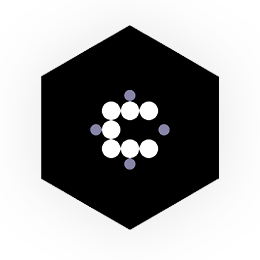Have you ever found yourself guarding an idea so fiercely, worried it might get stolen, that you never actually bring it to life? It's a common trap many aspiring entrepreneurs fall into, prioritizing the protection of their brainchild over the very action that could turn it into reality. This fixation on secrecy and perfection often leads to a standstill, where ideas simmer endlessly without ever reaching the boiling point of execution.
Let's look at the crucial shift in mindset that every entrepreneur needs to embrace: the leap from guarding ideas to executing them. It's not just about having a groundbreaking idea; it's about the journey of bringing that idea to life, learning from real-world feedback, and iterating towards success.
So, why do so many of us get stuck in the idea phase, and how can we overcome the psychological barriers that hold us back? Let's explore the challenges and solutions together, and discover how to move forward with confidence and resilience.
Challenges:
-
Fear of Idea Theft: Many people hold back from sharing their ideas, believing they are at risk of being "stolen." This fear stems from a mindset that values ideas in their raw form as the most precious asset.
- Underlying Psychological Pattern: This can be seen as a form of perfectionism or control. The need to tightly guard an idea suggests a fear of losing control over the situation or the outcome, which often results from insecurity or self-doubt.
-
Overvaluing the Idea, Undervaluing Execution: Believing that the idea alone is what makes success, while execution is secondary, can cause stagnation. Many people hesitate to act, waiting for their idea to be "perfect."
- Underlying Psychological Pattern: This reflects an idealization pattern, where one focuses on a dream-like vision of success without grounding in reality, which can lead to procrastination.
-
Doubt and Procrastination: Execution requires overcoming inner barriers like fear of failure, procrastination, and self-doubt. Many founders may hesitate to launch early because they fear criticism or their own perceived inadequacy.
- Underlying Psychological Pattern: This is often rooted in an inner critic or self-esteem issue, where fear of not being "good enough" stalls progress.
-
Over-Focus on Secrecy: Avoiding sharing ideas can isolate an entrepreneur from the feedback, partnerships, and input they need to grow.
- Underlying Psychological Pattern: This stems from defensiveness and an unwillingness to expose oneself to potential judgment, a protective measure often linked to early experiences of vulnerability.
Solutions:
-
Shift from Protection to Execution: The mindset shift from guarding an idea to focusing on executing it fosters a healthier approach to entrepreneurship. By seeing the idea as just the starting point and execution as the true value, the focus moves to where energy and effort should be spent—building, learning, and adapting.
- Developing Capacity: Building an action-oriented mindset and resilience is essential. Success comes from moving forward, even in the face of imperfection.
-
Embrace Imperfection and Early Feedback: Instead of waiting for perfection, launching early and iterating based on real-world feedback is a proven strategy. This also helps overcome the fear of failure because failure becomes part of the process rather than a final result.
- Developing Capacity: Cultivate openness to feedback and self-support, where entrepreneurs recognize that early failure or criticism is not a reflection of their worth but an opportunity for growth.
-
Build Strong, Passionate Teams: Surrounding oneself with a team that shares the passion for the idea allows the burden of execution to be shared. It also helps counteract doubt, as a motivated team brings collective energy and confidence.
- Developing Capacity: Focus on collaboration and trust, ensuring that delegation and shared vision are central to the project’s success.
-
Stay Connected to Customers: Engaging with the target market keeps the entrepreneur grounded in reality and adaptable. Customers will shape the product, and their involvement is the best way to protect and grow the business.
- Developing Capacity: This involves building relational intelligence—the ability to listen, adapt, and stay present with the needs of others rather than getting lost in one’s internal fears or rigid plans.
What Not to Do:
-
Avoid Over-Secrecy: Keeping ideas secret stifles growth. Instead, entrepreneurs should welcome feedback and collaboration, as these are essential for refining and improving the concept.
- Developing Capacity: Cultivate honesty and vulnerability, allowing oneself to be open and flexible to input from others.
-
Don't Aim for Perfection Before Launching: Waiting for a product to be "perfect" often means it will never be launched. Iterating in public is how great products are built.
- Developing Capacity: Self-acceptance and the ability to take risks are key here. It’s vital to act despite imperfection, knowing that improvement will come through iteration.
-
Don’t Obsess Over Originality: Focusing too much on being original can lead to solving non-existent problems. The value lies in solving real customer pain points, which often involves adapting existing solutions in innovative ways.
- Developing Capacity: Shift the focus from seeking validation through originality to finding alignment with real-world needs.
Conclusion:
Instead of fearing idea theft or waiting for perfection, founders should focus on execution, team building, and customer engagement. By developing the capacities of action, resilience, collaboration, and openness, they can overcome the internal barriers of fear, doubt, and procrastination that often stand in the way of success.




